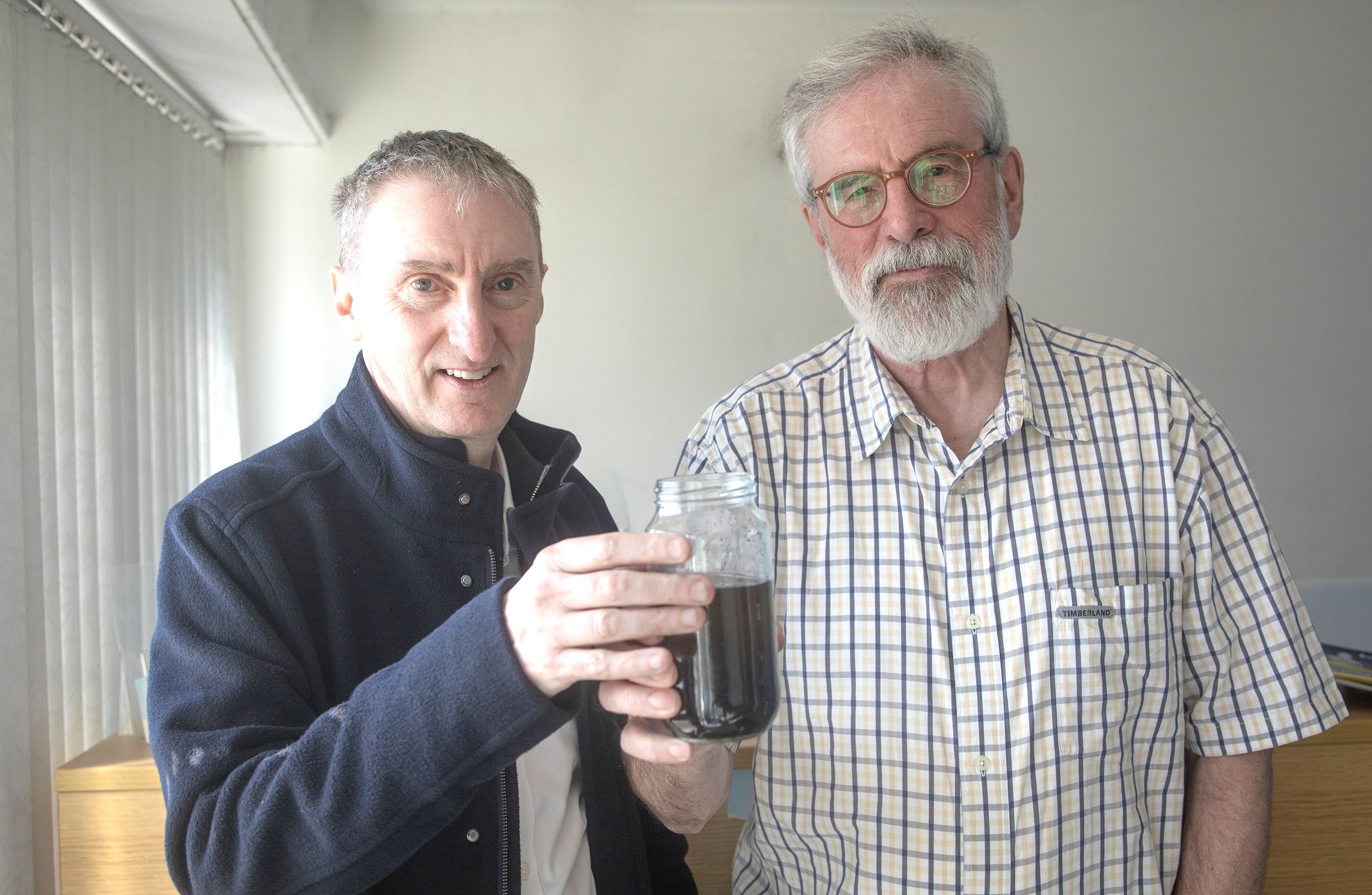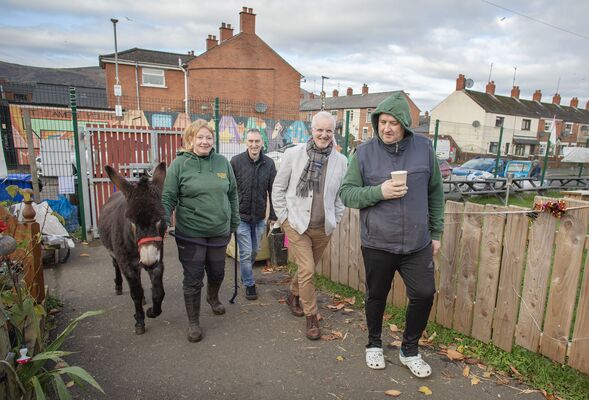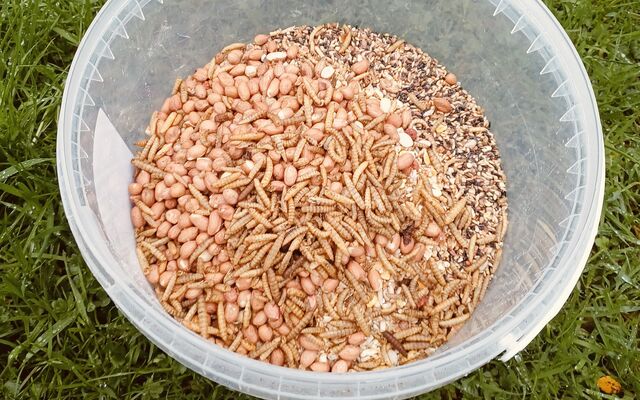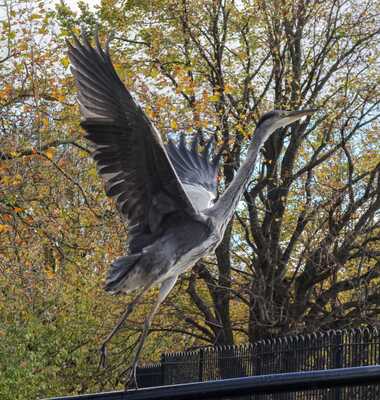DÚLRA’S garden pond is alive once more – thanks to tadpoles supplied by a VIP donor.
Having read last week’s tale of woe of how the frogspawn Dúlra had collected from a golf course failed to hatch, Gerry Adams came to the rescue with a jar of the remarkable creatures that he had scooped up from a puddle while out on a walk.
Dúlra brought them back home and gently poured them into the tiny pond and they immediately took to their new home, swimming through the clear water with a new sense of freedom – they are republican tadpoles after all!
It’s amazing what a pond brings to a garden. A couple of years back Dúlra decided to scoop out a few spadefuls of soil and put in a plastic mould of a pool you can buy in garden centres.
Now it’s a whole new ecosystem, with minuscule creatures darting through the water all over the place, other strange shapes moving on the bottom and countless insects on the surface.
The new tadpoles – torbáin in Irish – are like giants in comparison. With no fish to gobble them up, they are the masters of their universe. Yesterday they were so comfortable in their new surroundings that they took to swimming close to the surface, enjoying the spring sunshine. It’s a risk – they may have no predators in the pond, but there are any number of birds who find tadpoles a delicacy.
The tadpoles in the jar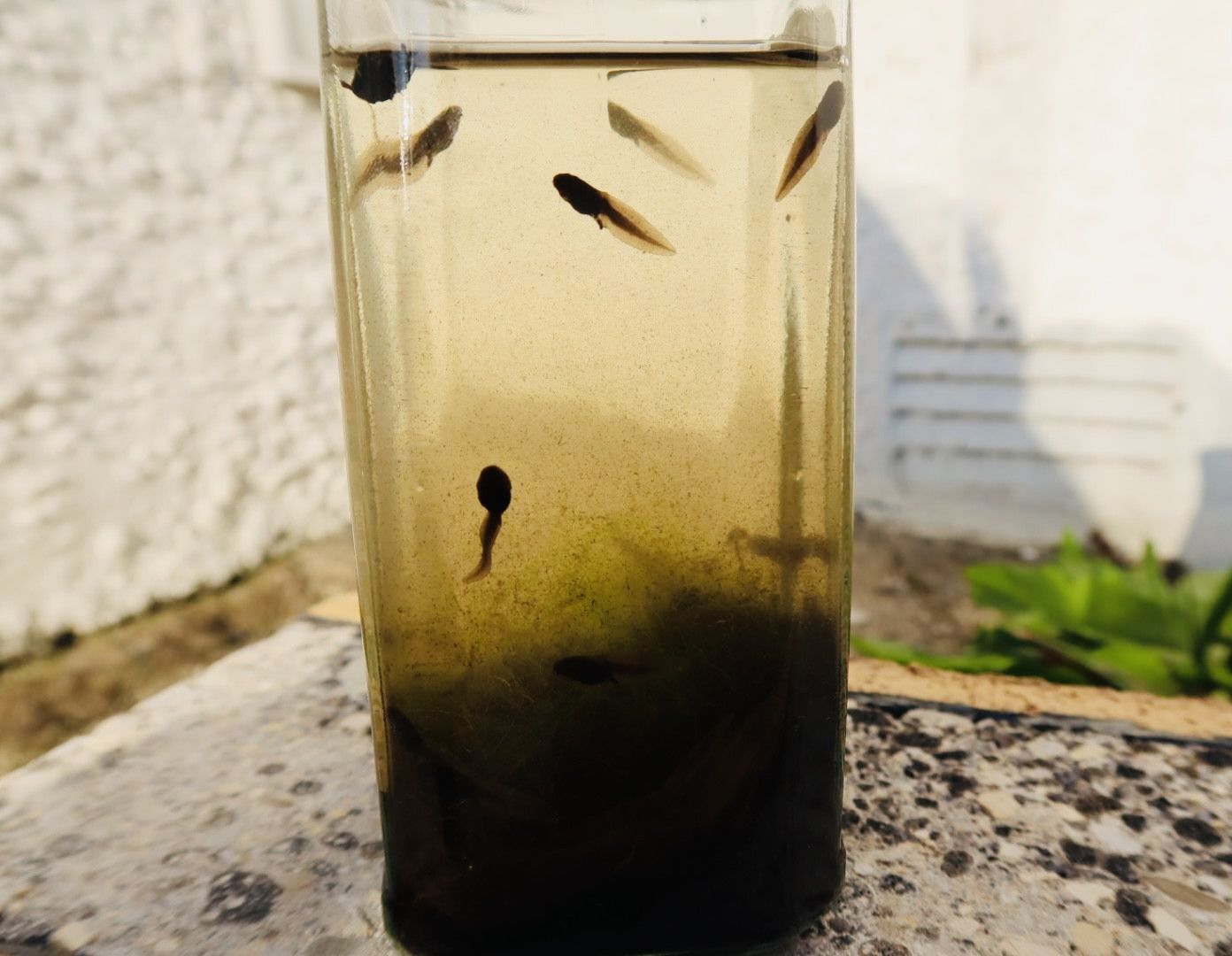
We consider frogs to be native Irish creatures, but experts aren’t so sure. It seems they may have been introduced here in the Middle Ages and they quickly took to our country. With so much rain they must have thought Ireland was made for them!
Gerry – like many of us – said he remembers seeing many more frogs when he was a kid than he does now, and especially along the watercress-covered stream that used to run along Divismore Park down into the Falls Park.
But no creature – no matter how small or how secretive – has escaped what’s been called the new age of extinction that has so badly depleted Irish nature. Only older people will remember how their car windscreens would be so pockmarked with insects that you’d have to regularly stop to clean it. Well, frogs too have suffered, especially as land where they once bred is drained.
But when a single mum can have 4,000 offspring a year, their population will never be in danger! And in fact they’re so common that they even use the poor creature for dissections in schools. Surely there’s a nicer way to learn about biology in this AI age?
Frogspawn is so plentiful that you can take it home and watch that truly amazing life cycle happen before your eyes – something Dúlra does every year. Frogs have a high tolerance to cold and come out of their winter slumber to breed in ice-covered pools and ponds, using the orientation of the moon to find their way home. That breeding takes place in just one day – the earliest date recorded in Ireland was February 13 in the south and February 20 in the colder north. The latest breeding was the last day of February.
The mother lays those eggs which then fill up with water to make the familiar spawn. In just a few months these incredible creatures turn into tadpoles and then tiny cute frogs which climb out to live in the undergrowth, feeding on snails, slugs and beetles – although their favourite meal is woodlice. They can change colour to match their surroundings, and if these baby frogs escape the attention of a whole host of predators – from hedgehogs to herons – they’ll return in three years’ time to the same pond whence they came to breed themselves.
Dúlra pours the tadpoles into his garden pond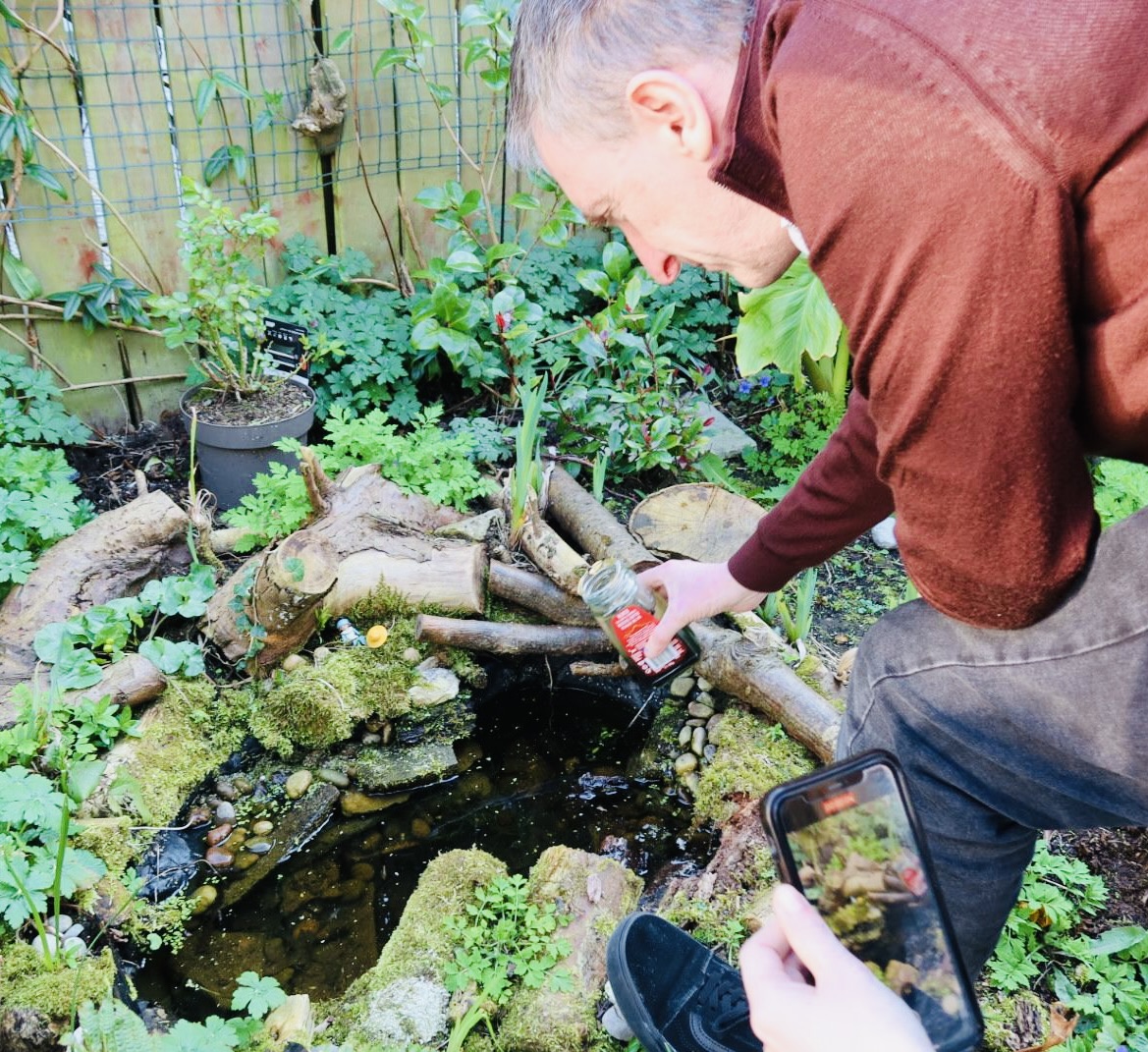
Gerry’s tadpoles will certainly have a better chance of surviving in the garden pond than in the wild. The water here is clean and clear and when they get a bit bigger, they'll get added security from a plastic net covering.
So come September, that wee jar of tadpoles will hopefully have transformed into frogs and they will take their first hops to freedom.
It’s said that no two frogs are identical and Gerry’s batch shouldn’t be hard to recognise.
Because Dúlra reckons that they might just be a wee bit greener than all the other frogs.
•If you’ve seen or photographed anything interesting, or have any nature questions, you can text Dúlra on 07801 414804.

